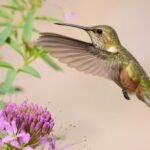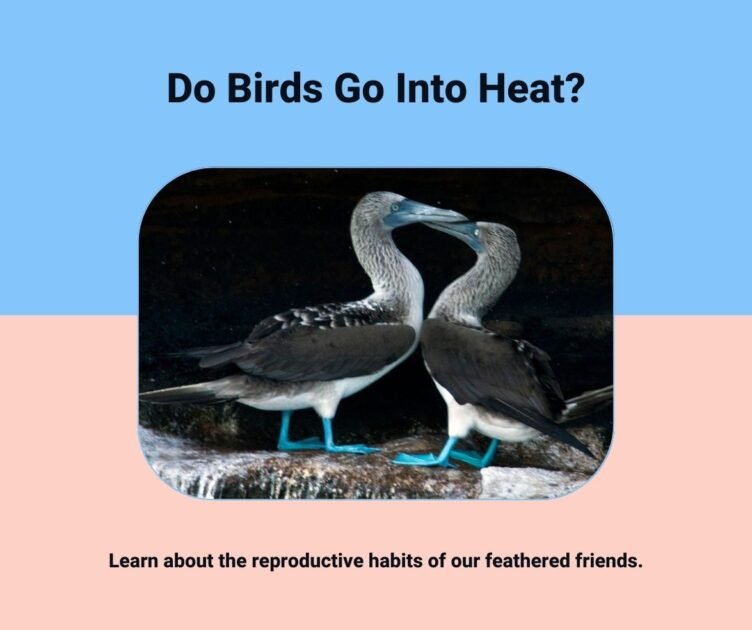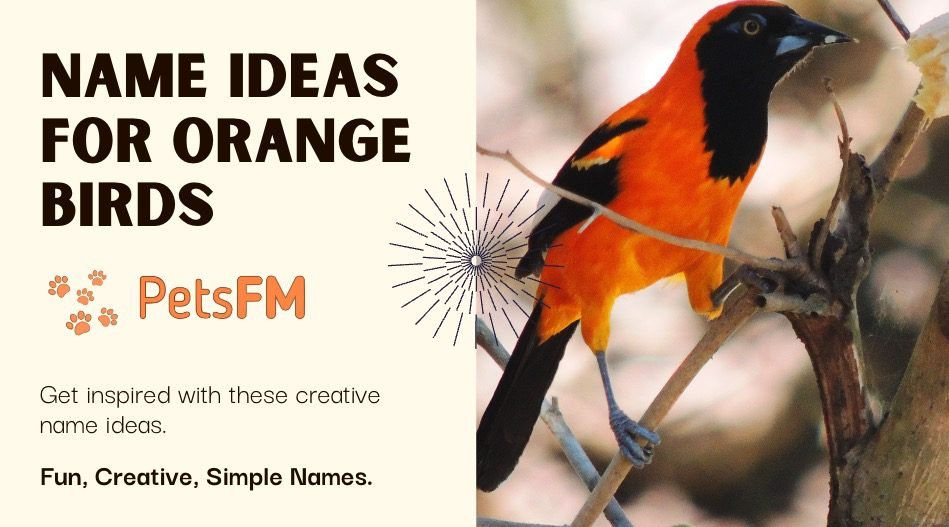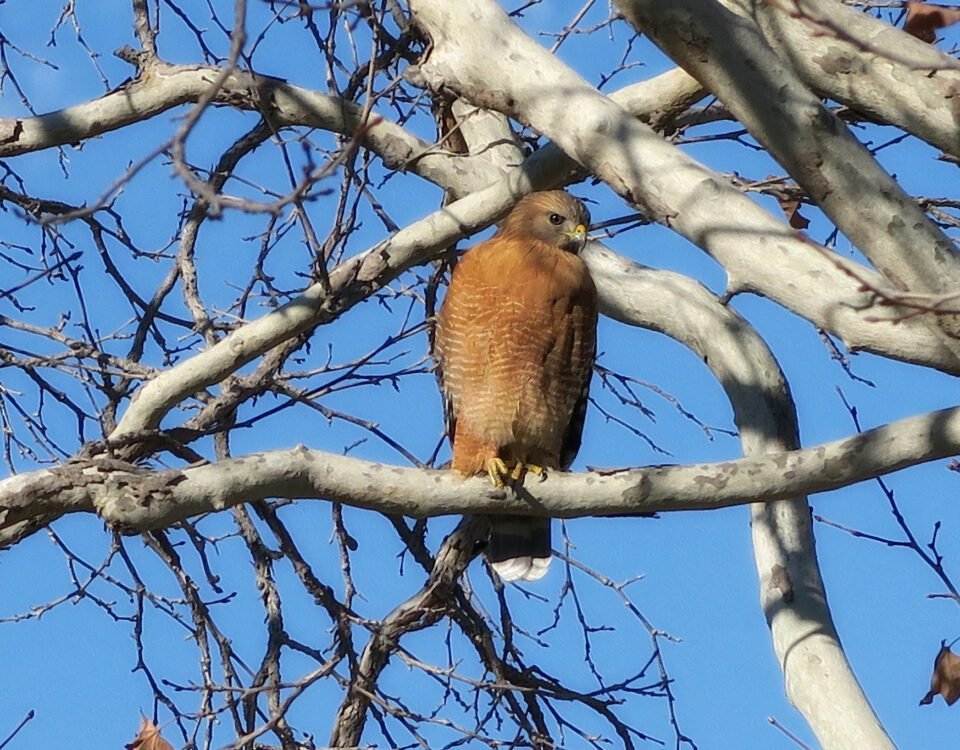


20+ Smells That Truly Repel Birds [2024 Updated Guide]
January 4, 2024


All You Need to Know About Feeding Almonds to Birds
January 4, 2024Birds have always fascinated us with their melodic songs and vibrant plumage. But beyond their aesthetic appeal lies a complex world of behaviors and biological processes, especially regarding reproduction.
Unlike mammals, birds have a unique approach to mating and breeding, raising intriguing questions about their reproductive cycles. This article explores the fascinating realm of avian reproduction, exploring whether birds go into heat.
Female birds experience a form of heat, but it differs significantly from other animals. Unlike mammals, where reproductive cycles are predominantly governed by hormonal fluctuations, birds follow a pattern called “breeding cycles.” These cycles are not primarily influenced by hormonal changes but are dictated by the duration of daylight exposure the birds experience.
At first glance, the reproductive strategies of birds might seem straightforward. However, a closer examination reveals a tapestry of intricate behaviors and physiological changes. This blog is not just for ornithologists or bird enthusiasts; understanding how birds reproduce offers insights into the broader themes of evolution, adaptation, and survival strategies in the animal kingdom.
Bird Reproductive Anatomy
Birds possess a unique reproductive system that sets them apart from many other animal species. Typically, male and female birds have a single reproductive organ, the cloaca.


Bird Reproductive Anatomy
During the breeding season, these organs swell, allowing for the transfer of sperm. Unlike mammals, most bird species do not have external reproductive organs. Eggs are fertilized internally and then laid to develop externally.
Differences Between Mammalian and Avian Reproduction
The reproductive process in birds (avian reproduction) significantly differs from that in mammals. One of the key differences is in the physical structure, as mentioned above.
In mammals, the embryo develops inside the mother, nurtured by a placenta, whereas in birds, the embryo develops externally in an egg. This difference leads to varied reproductive strategies, incubation behaviors, and parental care.
Key Terms in Avian Reproduction
- Brooding: This refers to the period when birds sit on their eggs to provide warmth, necessary for the development of the embryos. During brooding, one or both parents might take turns incubating the eggs.
- Mating Season: This is the time of year when birds engage in courtship and mating activities. The timing of the mating season is often aligned with environmental cues like daylight length and temperature, ensuring that the young are born in conditions favorable for their survival.
- Courtship Rituals: Many bird species engage in complex and often elaborate courtship displays to attract mates. These rituals include singing, dancing, displaying feathers, building intricate nests, or offering gifts.
- Nesting: This involves building or choosing a site to lay eggs and raise young. Nesting behavior varies widely among bird species and is critical for protecting and developing the eggs and young birds.
The Concept of ‘Heat’ in Animals
The term ‘heat’ or ‘estrus‘ refers to a specific phase in the reproductive cycle of many animals, particularly mammals. During this period, females become sexually receptive and are capable of conceiving.
This phase is characterized by significant hormonal changes, including increased levels of estrogen, which prepare the body for potential pregnancy.
Behaviorally, animals in heat may exhibit signs such as restlessness, increased vocalization, and physical changes like swelling of the genital area.
Do Male Birds Go Into Heat?
Male birds do not go into heat in the way mammals do. Instead, their readiness for mating is influenced by environmental factors like daylight length and temperature. During the breeding season, male birds display behaviors such as increased singing, vibrant plumage display, and territorial aggression, which signal their readiness to mate rather than a mammalian-style heat cycle.
Bird vs. Mammal Reproduction Comparison Table
| Aspect | Bird Reproduction | Mammal Reproduction |
|---|---|---|
| Reproductive Organs | Cloaca, generally have no external reproductive organs | Distinct external reproductive organs |
| Fertilization | Internal, eggs are laid and develop externally | The internal, embryo develops inside the mother |
| Development of Offspring | In eggs outside the mother’s body | Inside the mother’s body, often with a placenta |
| Parental Care | Often both parents are involved in nesting and care | Varies, but generally the mother provides primary care |
| Mating Season | Influenced by environmental factors like daylight length | Often governed by hormonal cycles |
| Courtship Behaviors | Elaborate displays like singing, dancing, plumage display | Varies widely, with less reliance on visual displays |
| Gestation/Incubation | Incubation of eggs outside the body | Gestation inside the mother’s body |
| Birth/Hatching | Hatching from eggs | Live birth (except monotremes like the platypus) |
| Warmth for Offspring | Brooding (sitting on eggs for warmth) | Provided internally during gestation |
| Feeding Offspring | Often regurgitation of food to chicks | Nursing with milk produced by the mother |
How do Birds Display Their Reproduction Readiness?
Though not experiencing ‘heat’ in the traditional mammalian sense, birds display distinct signs and behaviors that indicate their readiness for reproduction.


Birds Attracting a Mate
These signs are often closely aligned with environmental factors and internal physiological changes. Here are some key indicators of reproductive readiness in birds:
1: Increased Vocalization
Many bird species become significantly more vocal during the breeding season. This increase in singing, especially among males, serves as a way to attract potential mates and to establish and defend territories.
The complexity and frequency of these vocalizations can be a crucial factor in attracting a female.
2: Display of Plumage and Courtship Rituals
One of the most noticeable signs is the display of vibrant plumage or engaging in specific courtship rituals. Males often exhibit brighter colors and may perform elaborate dances or aerial shows to catch the attention of females.
These behaviors demonstrate the bird’s health and vitality and play a crucial role in mate selection.
3: Nest Building
Both male and female birds may begin to build nests or prepare nesting sites. Nest building is a clear indication of readiness for egg-laying and rearing of young. In some species, the quality and location of the nest can attract a mate.


Mourning Dove Nest
4: Aggressive and Territorial Behaviors
As birds enter their breeding cycle, they may become more territorial and aggressive, especially males. This behavior aims to protect their breeding area from rivals and secure a safe environment for raising offspring.
5: Physical Changes
Some birds may undergo physical changes as they become ready to breed. This can include changes in coloration, the development of specialized feathers, or the swelling of cloacal areas in preparation for mating.
6: Change in Feeding Habits
Some birds may change their feeding habits or increase their food intake in preparation for breeding. This is particularly important as they need extra energy for courtship displays, nest building, and, eventually, for laying eggs and feeding chicks.
7: Pair Bonding
Many bird species form pair bonds during the breeding season. This can involve mutual grooming, sharing of food, and staying close to each other. Pair bonding is crucial for coordinated efforts in nesting and raising young.


How Long Do Birds Go In Heat?
Birds do not go into ‘heat’ in the same way that many mammals do. Instead, they have breeding seasons, when they are reproductively active and ready to mate.
The length of these breeding seasons can vary significantly among different bird species and can be influenced by various environmental and physiological factors.
Factors Affecting the Length of Breeding Seasons in Birds
Environmental Cues
- Daylight Length: For many birds, the length of daylight is a crucial trigger for initiating the breeding season. As the days get longer in spring, it can signal the start of the breeding period.
- Climate and Weather: The local climate and weather conditions can also influence the timing and duration of the breeding season. Birds must ensure the conditions are suitable for raising their young, particularly regarding temperature and food availability.
Species-Specific Variations
- Different bird species have different breeding strategies. Some may have a short and intense breeding season, while others might breed over an extended period.
- Migratory Patterns: For migratory birds, the breeding season is often tightly synchronized with their migration patterns, ensuring they breed in optimal conditions in their breeding grounds.
Individual Health and Condition
- Individual birds’ physical condition and health can also affect their readiness to breed. Birds in good health are more likely to enter and sustain their breeding condition.
Typical Duration of Breeding Seasons
In temperate regions, the breeding season for many bird species often coincides with spring and early summer, lasting from a few weeks to several months.
In tropical regions, where the variation in daylight length is less pronounced, breeding seasons can be more variable. They may occur at different times of the year, often timed with rainy seasons or periods of abundant food.
Final Thoughts
In conclusion, the reproductive patterns of birds, distinct from the mammalian concept of ‘heat,’ are complex and fascinating. From intricate courtship displays to the influence of environmental cues, bird reproduction showcases a remarkable adaptation to diverse ecosystems.
Understanding these unique breeding cycles highlights the diversity of avian life and enriches our knowledge of the natural world, reflecting the intricate balance of nature’s reproductive strategies.



